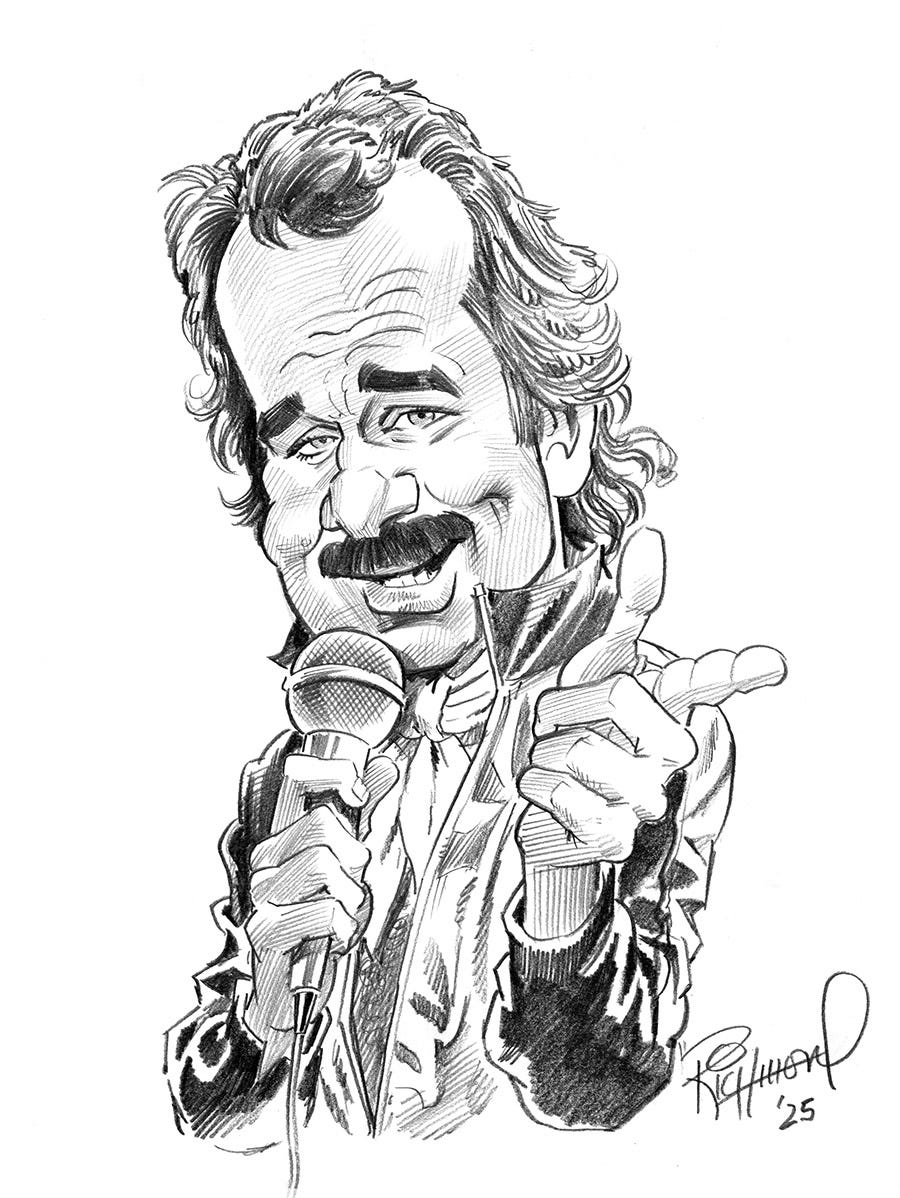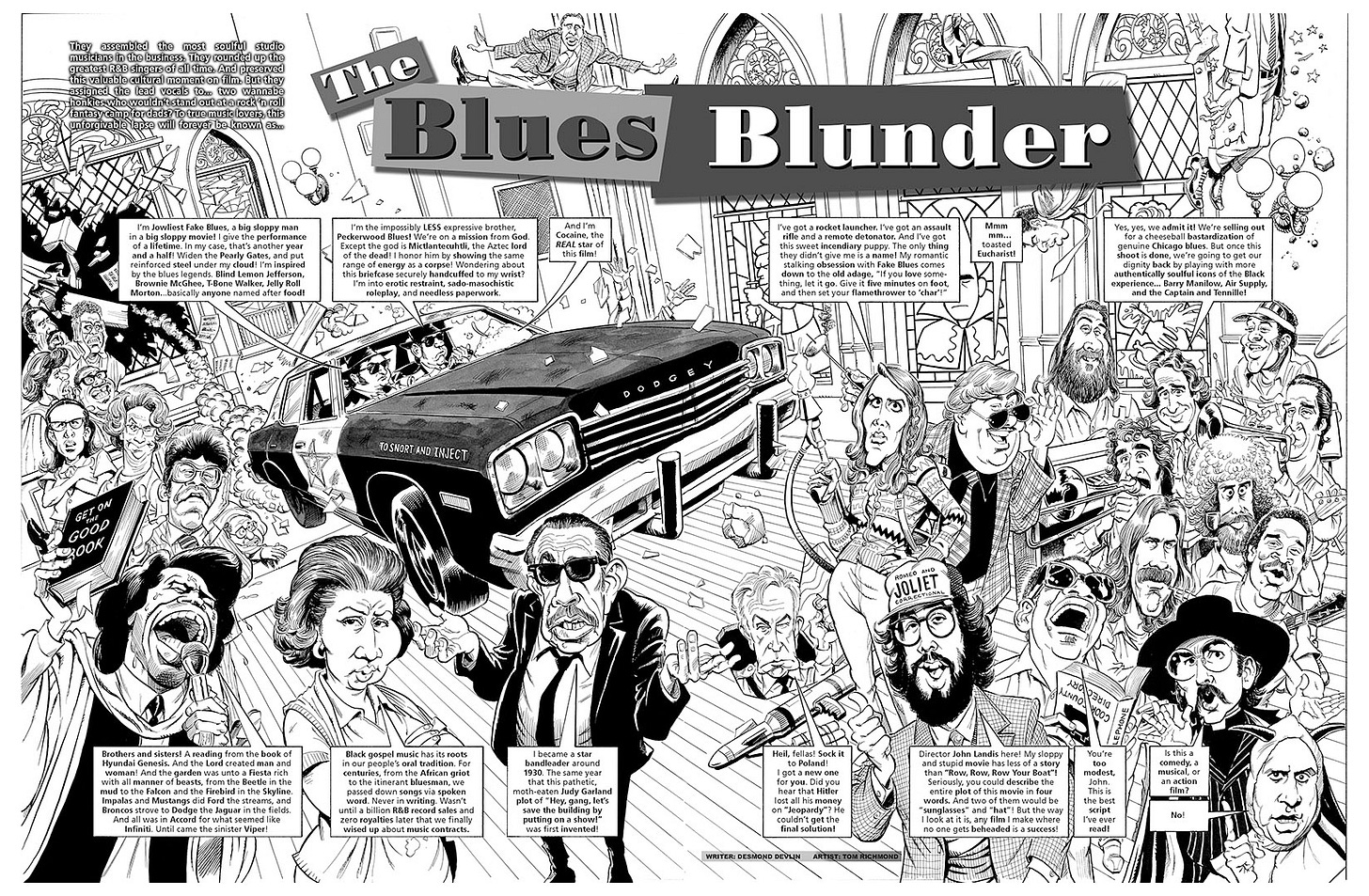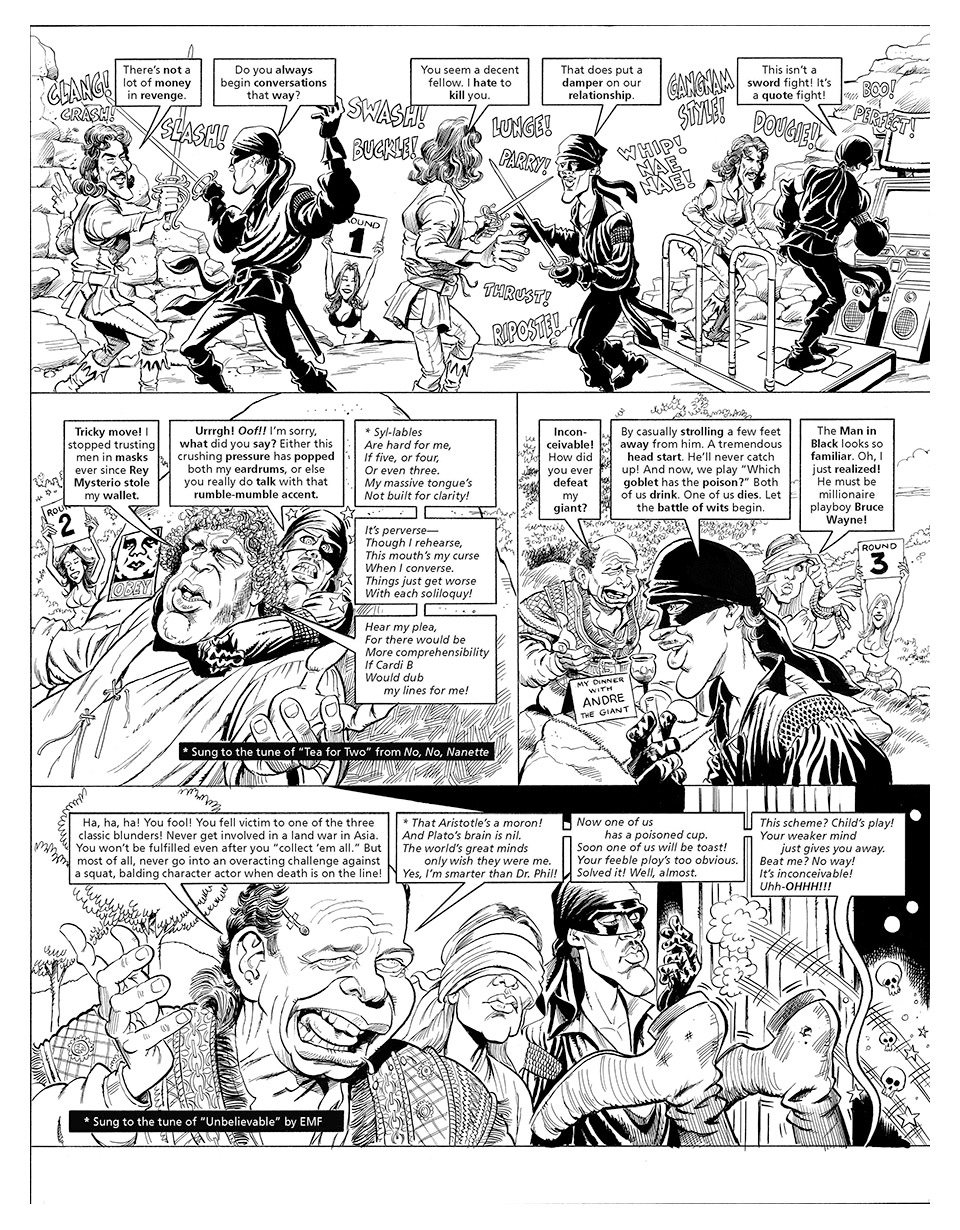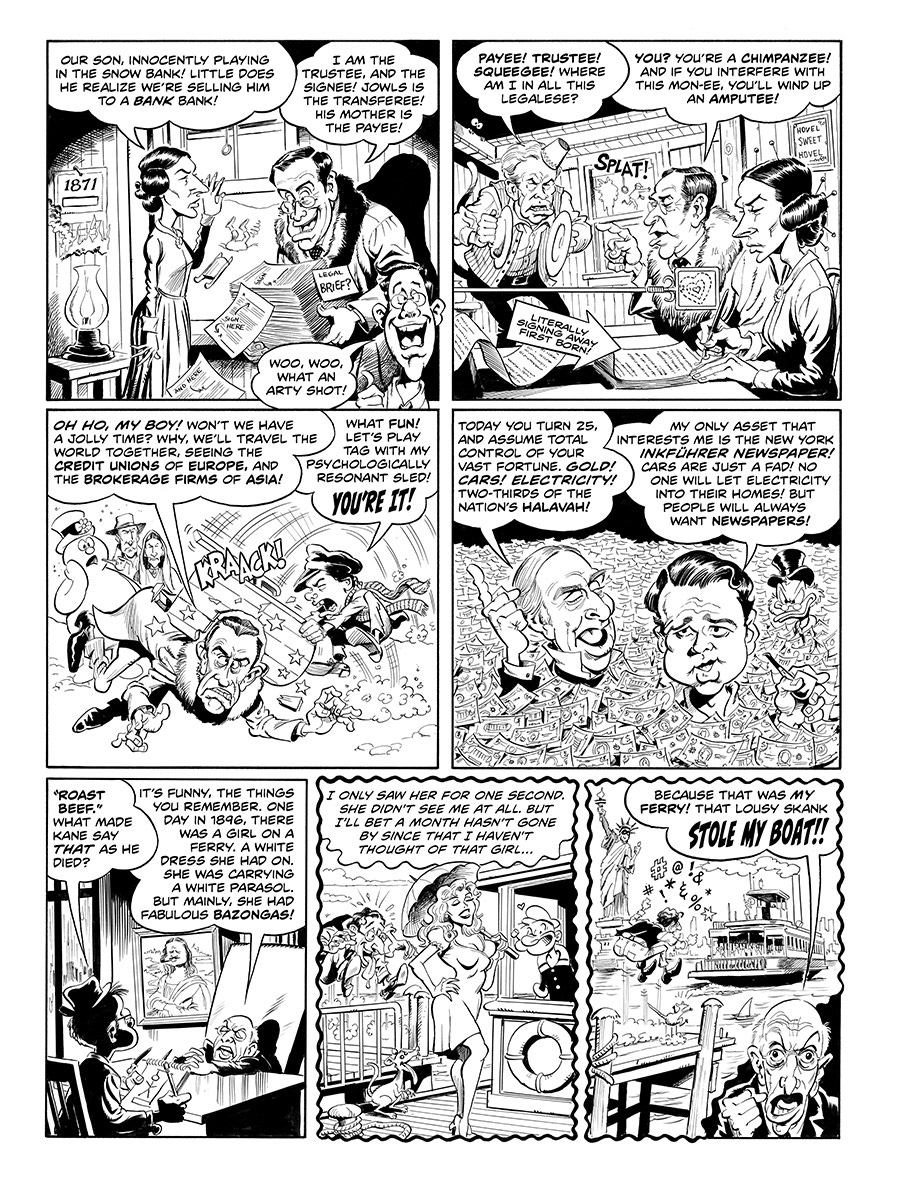Time again for another of the miserable, maddening, and morose piles of malarkey that are these newsletters! This week our sketch is live from the Powder Room on Meatball Mountain, we dive into digital coloring and shill a bunch of original art from everyone's favorite book of movie parodies... on with the 'Wretch!
Sketch o'the Week: Bill Murray!
Click here if you are interested in this original sketch.
We continue our famous "Saturday Night Live" characters series with a young Bill Murray as "Nick the Lounge Singer", a character he started doing back in his "Second City" days in Chicago. Nick's last name would change to suit whatever venue he was performing in, but the character was always the indefatigable, cringey performer "working the crowd" wherever he went. Nick appeared on SNL nine times when Murray was a cast member and twice again when he was the host. He also reprised the character for SNL's 25th, 40th and most recently 50th anniversary specials.
This has been another lesson in “Saturday Night Live” history, which was not written by ChatGPT.
Serious Art Schooling
I went to a very small, and now defunct, art school in St. Paul, MN called The School of Associated Arts. By small I mean my graduating class had about 30 people in it. The school itself was an old mansion up near Cathedral Hill:
Yes, I was an X-Man. All that was missing was an underground hanger with a jet (although there was a small garage in the back that had a “turntable” floor like in the 60’s Batman show… I am serious) and a bald lead professor in a wheelchair. I transferred to that school from the University of Minnesota in 1985, and graduated in 1988. Despite its small size it was actually a fully accredited college, not a trade school. I received a full bachelor's degree, although I couldn't tell you where my diploma is right now. I majored in "Illustration". The other majors available there were "Fine Art" and "Graphic Design". The feuds between the majors were legendary. The fine artists and graphic designers called the illustrators “wrists”, because all we did was art that realized some other person’s visions. The fine artists were loony hippies, smearing paint on inanimate objects and congratulating themselves on bucking the system. The graphic designers majored in that because they couldn’t draw. None of that was true of course but we had our fun teasing each other.
One thing I did not learn in that school was anything about cartooning. Not only were there zero classes in cartooning, comics, or even animation offered at the college, any form or cartooning or comics was actively frowned upon by the instructors. My illustration classes often revolved around mock "jobs", where you were given an assignment much like a client hiring you for a freelance job, and you had to execute that job to satisfy that client (the teacher). Sometimes the medium or style you were to work in was specified, sometimes you were free to choose that for yourself. My instructors, who all knew I did caricatures at a theme park as a summer job, would not allow me to do a cartoon-centric piece for any of these projects. I was required to do "serious" illustration only.
One instructor in particular was very down on cartooning. He would often lecture me about how "only one in 1,000 artists makes a living as a cartoonist", and how if I wanted to do illustration as a career I needed to drawn and paint realistically so I could do illustrations of lawn tractors or roast beef sandwiches people sitting on park benches drinking Coca Cola for ads and circulars. That was how you made a living as an artist.
This was the mid-late 80's. The entire digital art department at SAA consisted of a single Macintosh II computer up in a tiny attic room with MacPaint installed. There were no classes offered. It was an oddity that we played with. Neither that illustration instructor nor any of the rest of us knew then that PhotoShop, PageMaker, Quark, and other graphics programs were only a few years away. The desktop publishing revolution those programs ushered in would kill the mundane ad art market that instructor was going on about. Years later I ran into that cartoon hating instructor and he hinted that he might be interested in working for me as a caricature artist out at my theme park concession. Oh the irony. I was tempted to tell him that was fruitless, as only one out of a 1,000 artists make a living as a cartoonist, but I took the high road. He never drew for me, by the way.
At the time I was frustrated that I had no resources to learn about comics and cartooning at my college, but in retrospect I am glad I was forced to learn and develop other art skills. I taught myself how to do comics and cartooning from a variety of outside resources, but the more realistic skill set I learned only helped me develop what would eventually become my "style" when I turned my focus to the kind of work I loved the most and came most naturally to me.
It was especially helpful when, in the mid nineties, I saw that digital art was going to be the wave of the future and I started experimenting with programs like Photoshop and pen tablets like the Wacom Intuos. Using the computer to color is no different than using a brush and paints, it's just a different set of tools. Color theory, use of values, and the fundamentals of painting still apply. I used all those things I learned to do with real paints in college in my digital work, but I didn't have to figure out how to wash pixels out of my clothes.
Premium Subscribers can check out this week's video of me doing a digital coloring demo, where I talk about how I scan and prep line art for color, my basic process, and how I do my "colored line" technique. Video at the bottom of the newsletter!
CLAPTRAP Original Art Available!
It's been a little over a year since CLAPTRAP was released, and I have officially healed from the trauma of doing that much work for one project. The many late nights and countless hours on the drawing board makes it a little hard to want to part with the tangible results of all that work. It's the same with most any big jobs for me. For a while after I finish a major project I like to have that work in the flat files just as a reminder that I did accomplish something with all the effort. Eventually that need passes and it just becomes more art in my flat files, although I still consider the work I did on CLAPTRAP to be the best stuff I've ever done.
All that said I have made the originals from the book available in the Studio Store. These were all done like my work for MAD, inked traditionally with dip pen and brush on heavy bristol at (almost) 200% of print size. That makes each page a whopping 17" x 22"! I paste up the text copy into the empty inked word boxes, and in the case of splash pages also paste up the header graphics and intro copy. I also include a print of the page as it appears in the book. All that stuff is signed of course.
If you are interested in an original CLAPTRAP page, visit the Studio Store here. I'm afraid the subscriber discounts don't apply to original art.
Thank you for being a subscriber! As always, if you liked what you saw please share it with others. Remember I'm always looking for feedback, questions for the mailbag, and suggestions for future Sketch o'the Week subjects. Just reply to this email with any of the above! And always remember... it's crackers to slip a rozzer the dropsy in snide!
Keep reading with a 7-day free trial
Subscribe to The Ink Stained Wretch to keep reading this post and get 7 days of free access to the full post archives.













